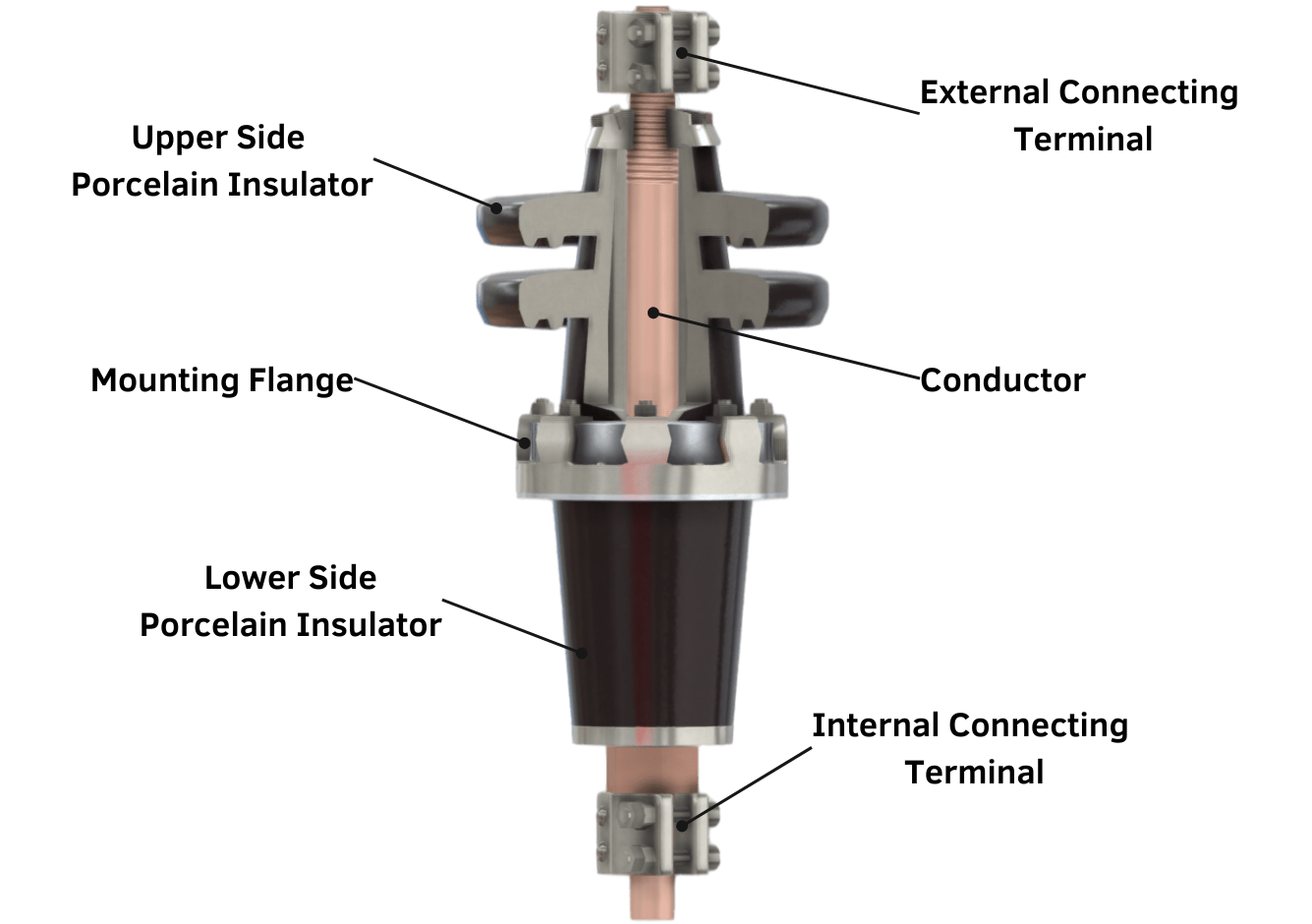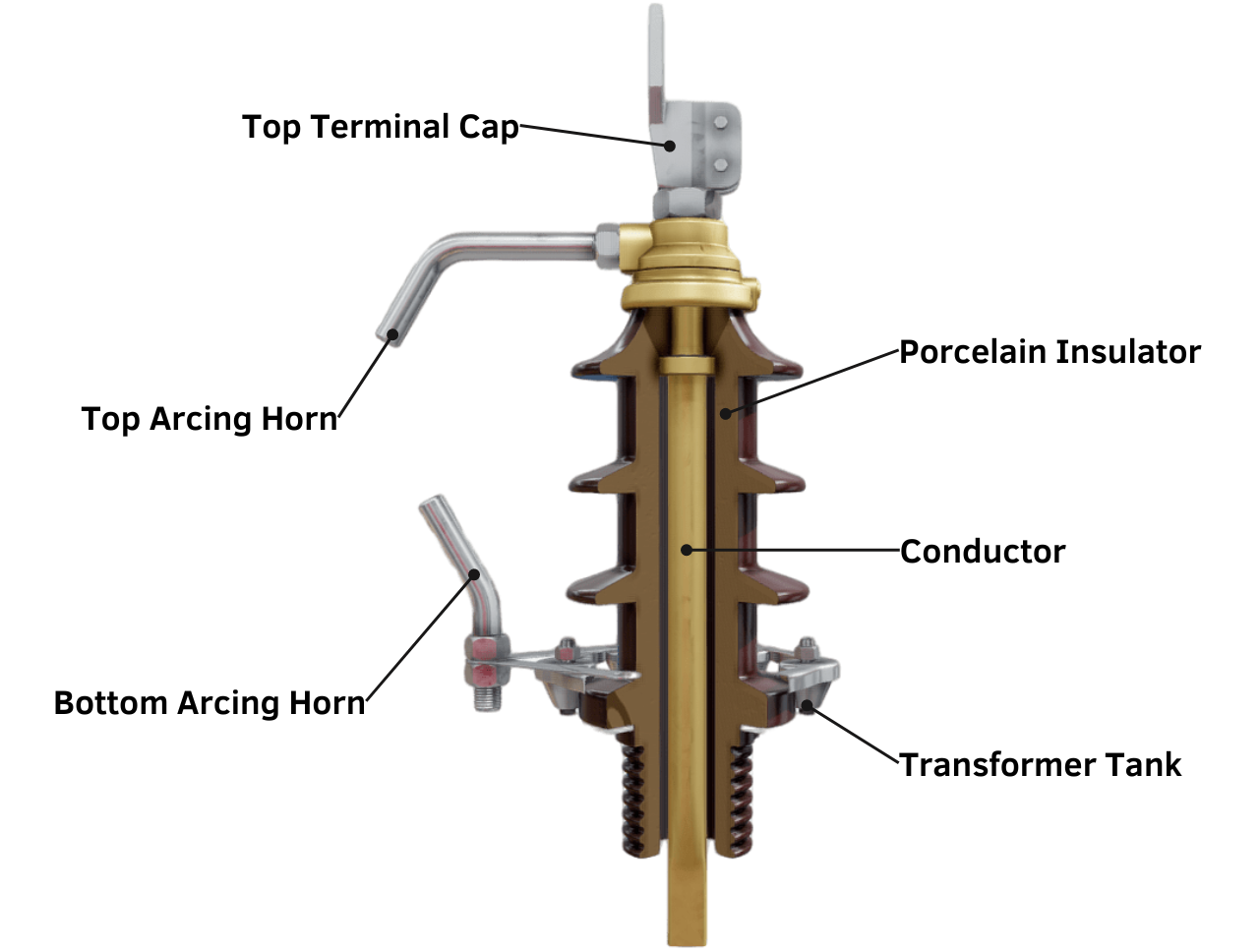Introduction
For voltages of approximately Um ≤ 11 kV, a simple dry type bushing is commonly used. Dry bushings consist of a conductor surrounded by a high-grade porcelain insulator body. ‘Dry’ indicates that no insulating fluid is used in the bushing construction. The porcelain body surrounds the entire conductor except for the terminal ends.

For higher distribution voltages, Um ≤ 52 kV, electrical grade mineral oil is often used as part of the insulating structure to increase the electrical withstand capabilities of the bushing. In order to achieve this, a void (empty space) is created during the bushing’s manufacture and oil then fills the space between the conductor and insulator (porcelain body).
Variations in oil filled bulk type bushings include:
- Oil shared with the transformer main tank:
- Oil that is sealed within the bushing.
- Oil that can be accessed through the bushing body (this allows for easy oil replenishment, or, oil sampling with dissolved gas in oil analysis (DGA) diagnostics etc., but is no longer favoured because of contamination concerns).

Oil Filled Porcelain Bulk Bushing
Want to learn more about electrical bushings?
Then check out our Introduction to Electrical Bushings video course!
How Electrical Bushings Work
The below video is an extract from our Mechanical and Electrical Engineering Explained Online Video Course.
Enjoying this article? Then be sure to check out our Introduction to Electrical Bushings Video Course! The course has a quiz, handbook, and you will receive a certificate when you finish the course. Enjoy!
Related Online Engineering Courses
Introduction to Electrical Transformers
How Electrical Transformers Work
Electrical Transformer Health Assessment
Why Are Transformers Rated in VA not W?
Electrical Substations Explained
